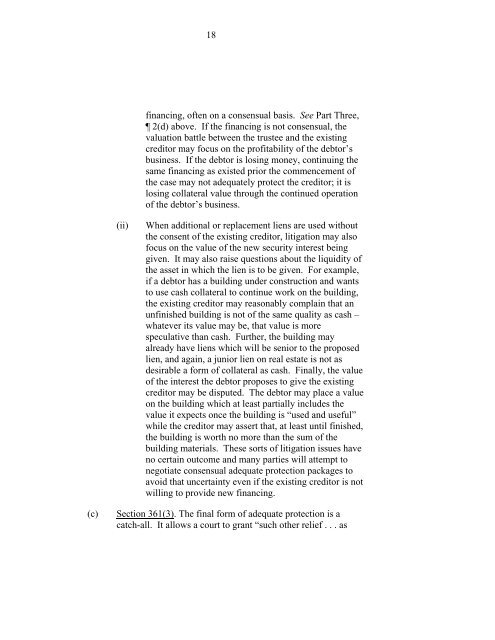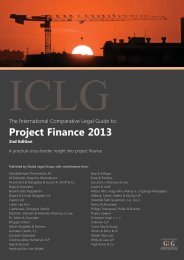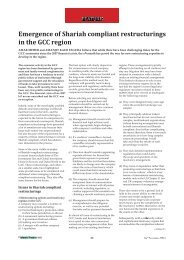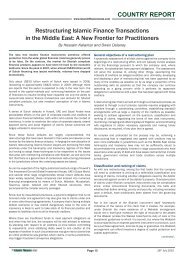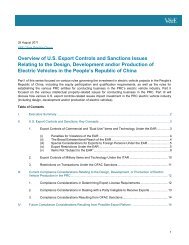12 AN INTRODUCTION TO DIP FINANCING Jane Lee
12 AN INTRODUCTION TO DIP FINANCING Jane Lee
12 AN INTRODUCTION TO DIP FINANCING Jane Lee
You also want an ePaper? Increase the reach of your titles
YUMPU automatically turns print PDFs into web optimized ePapers that Google loves.
18<br />
financing, often on a consensual basis. See Part Three,<br />
2(d) above. If the financing is not consensual, the<br />
valuation battle between the trustee and the existing<br />
creditor may focus on the profitability of the debtor’s<br />
business. If the debtor is losing money, continuing the<br />
same financing as existed prior the commencement of<br />
the case may not adequately protect the creditor; it is<br />
losing collateral value through the continued operation<br />
of the debtor’s business.<br />
(ii)<br />
When additional or replacement liens are used without<br />
the consent of the existing creditor, litigation may also<br />
focus on the value of the new security interest being<br />
given. It may also raise questions about the liquidity of<br />
the asset in which the lien is to be given. For example,<br />
if a debtor has a building under construction and wants<br />
to use cash collateral to continue work on the building,<br />
the existing creditor may reasonably complain that an<br />
unfinished building is not of the same quality as cash –<br />
whatever its value may be, that value is more<br />
speculative than cash. Further, the building may<br />
already have liens which will be senior to the proposed<br />
lien, and again, a junior lien on real estate is not as<br />
desirable a form of collateral as cash. Finally, the value<br />
of the interest the debtor proposes to give the existing<br />
creditor may be disputed. The debtor may place a value<br />
on the building which at least partially includes the<br />
value it expects once the building is “used and useful”<br />
while the creditor may assert that, at least until finished,<br />
the building is worth no more than the sum of the<br />
building materials. These sorts of litigation issues have<br />
no certain outcome and many parties will attempt to<br />
negotiate consensual adequate protection packages to<br />
avoid that uncertainty even if the existing creditor is not<br />
willing to provide new financing.<br />
(c)<br />
Section 361(3). The final form of adequate protection is a<br />
catch-all. It allows a court to grant “such other relief . . . as


